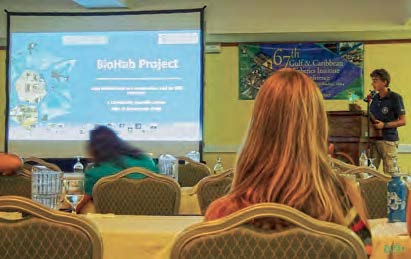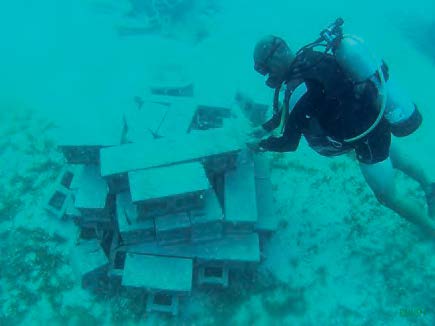Gonzalo not only caused a lot of damage on the water, but also under the water as well. At a depth of 20 meters, the hurricane managed to displace the modules of cinder block that create the Bio- Hab artificial reef. A team from the Réserve did a dive once the water was clear enough to see how many of the modules had been disturbed or actually moved. This gave them an idea of the violent nature of the water during the storm and how it had such an impact at that depth. The damage was limited in that none of the blocks were actually broken and the Réserve crew is already reconstructing that which they so carefully put in place last year. Curiously, some new species have appeared about the BioHab, such as a species from the Haemulon family and a lionfish, that had previously not been seen at this site. On the other hand, some other species are no longer there, such as adult lobsters, which may have moved to other sites with the strong currents. This unexpected damage will slow down the Bio- Hab2 project, planned at a depth of 15 meters. One note of good news: the coral reefs do not seem to be impacted by Gonzalo..


















